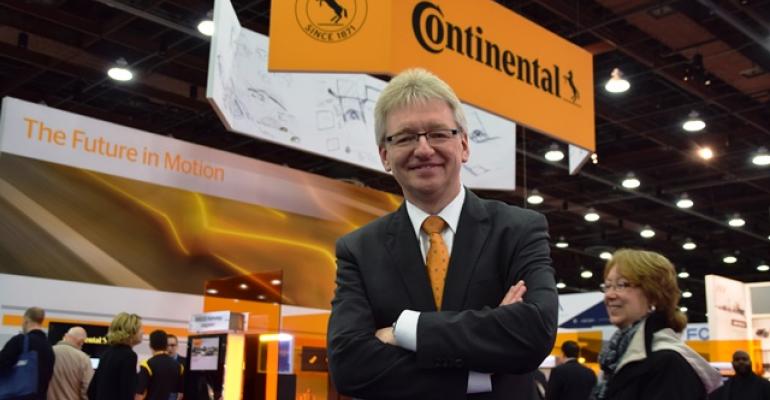DETROIT – Ask any futurist what personal mobility will look like after 2020 and they inevitably will describe a scenario where consumers have lost interest in driving and new vehicles have turned into soulless transportation devices that are autonomous and shared like taxis.
Helmut Matschi, an executive board member of auto supplier Continental’s Interior Div., gives a decidedly different vision of the future of mobility during his keynote address Thursday at the SAE World Congress here.
Citing a comprehensive survey Continental conducted in January of more than 5,600 consumers of varying ages in the U.S., Europe, China and Japan, he says consumers overwhelmingly enjoy driving and want to own their own vehicles for the foreseeable future.
“More than 90% were saying ‘driving is convenient,’ ‘driving is fun’ and ‘driving is very sensible,’ Matschi says.
Between 62% and 65% of city residents, suburbanites and country dwellers all reported they enjoyed driving, no matter where they lived.
Perhaps most surprisingly, private-vehicle ownership remains immensely popular, with 94% in the U.S. reporting they personally owned a car and only 1% saying they belonged to a car-sharing service. Outside the U.S., personal ownership is somewhat lower, with a higher percentage of respondents reporting they shared a vehicle with family members.
Respondents in Germany, China, France, Japan and the U.S. overwhelmingly say they prefer to own a personal vehicle if financial circumstances allow it. A whopping 93% of consumers in China and the U.S. say they prefer ownership over leasing, renting or using a car-sharing service, with respondents in Japan being the least enthusiastic at a still-healthy 75%.
Even though the desire to own a car generally is lower among younger people than their parents, the aspiration still is strong among consumers 18-25 years old. Chinese youth lead the world, with 96% saying they want to own a personal vehicle, while Japanese log the lowest interest at 73%. U.S. young people are in the middle at 88%, 10 percentage points below what the survey describes as “elderly” U.S. consumers.
“We see there is a lot of emotion about driving, there are a lot of emotional aspects…and this is good, because this allows us to choose the right direction going forward,” Matschi says.
However, in order to keep the emotional connection alive, especially with younger drivers, personal vehicles and especially the human-machine interface will have to change and provide benefits that are both visible and invisible to the driver, Matschi says.
Visible benefits include incorporating the Internet into the vehicle and enhancing all aspects of the owner’s digital life. Invisible benefits include using Internet connectivity to improve safety and fuel efficiency.
The HMI also will have to change fundamentally. “We need to change from the static HMI to the more holistic HMI,” Matschi says. There needs to be large head-up displays with augmented reality features, not only for luxury vehicles but for more mainstream vehicles as well.
“We need (an HMI) that provides a better dialog without words. We need more haptic touchpads …We need different warning and learning strategies for advanced driver assistance systems.”
This will lead to more complex electronic systems and software. Current vehicles have more than 160 sensors, up to 100 electronic control units and more than 170 actuators.
Continental is dealing with these issues by adding 1,000 electronics and software specialists per year and forming numerous partnerships: Cisco for data-compression and security, IBM for processing large amounts of data and a company called “here” for high-precision and cloud-based digital map data.





